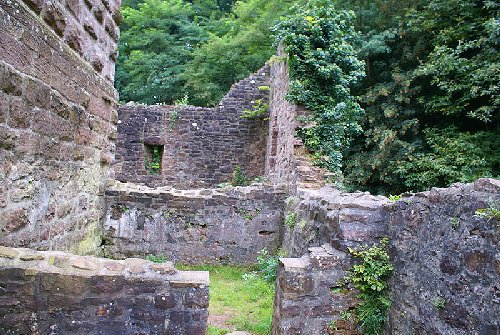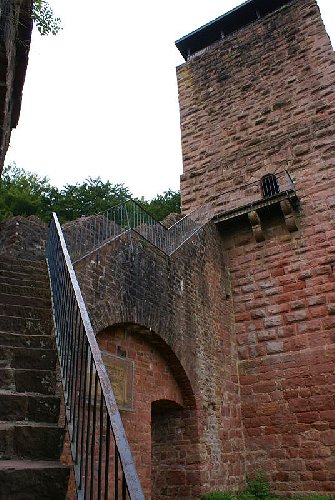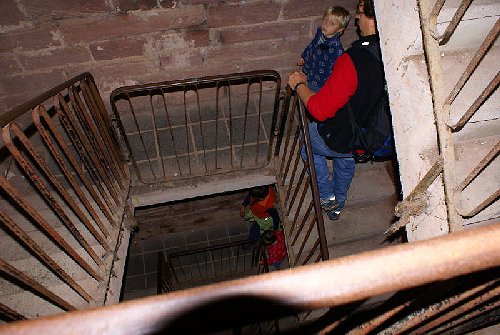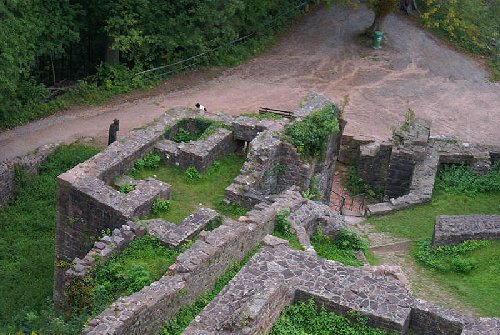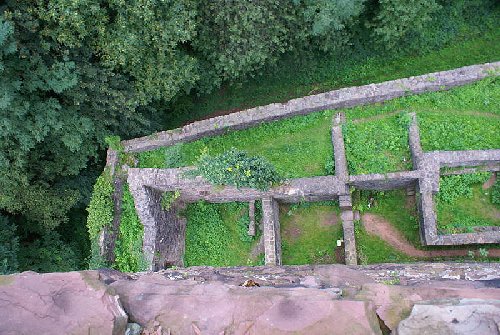The Hinterburg's keep is worth the climb, even if just for the small adventure it contains. At first you must negotiate a fairly narrow stairway and catwalk, which can be a little nervewracking if you have a fear of heights. Once inside the tower's ten foot thick walls there are no lights, nor any loopholes to admit natural illumination. The middle part of the tower is almost pitch dark, and having a flashlight can be very useful. This adventuresome soul forgot his in the car, so I navigated my way up (and helped some folks on the way) by tripping the flash on my camera periodically.
An interesting aspect of the tower is that only the upper half is open. The lower half is blocked off, of course piquing one's interest as to what it might be like, and even more, how deep it actually went.
The view from the tower provides an excellent overview of the layout of the outer sections of the castle. These areas included a combination of living quarters and fighting positions. The ruined walls have been smoothed out and cemented to prevent further crumbling of the structure.
Left, a few of the battlements to the main entrance, and on the right, the outer ward.
Below left, a view of some of the outer rooms along the base of the tower. These rooms clearly served the primary purpose as quarters and storage for the garrison, while at the same time having windows large enough for light, but tight enough to be used as fighting positions. Unlike the loophole in the battlement at the entrance, these are larger and provide more freedom for the use of a variety of missile weapons.
Bottom, the same area as the one on the left, only this from the ground. The rooms were subdivided in such a way as to prevent the compromise of the entire area if an enemy stormed into one section. This served the same purpose as water-tight doors in naval vessels, but without any doorways provided an inconvenience for the garrison, both in day to day living as well as in battle.
